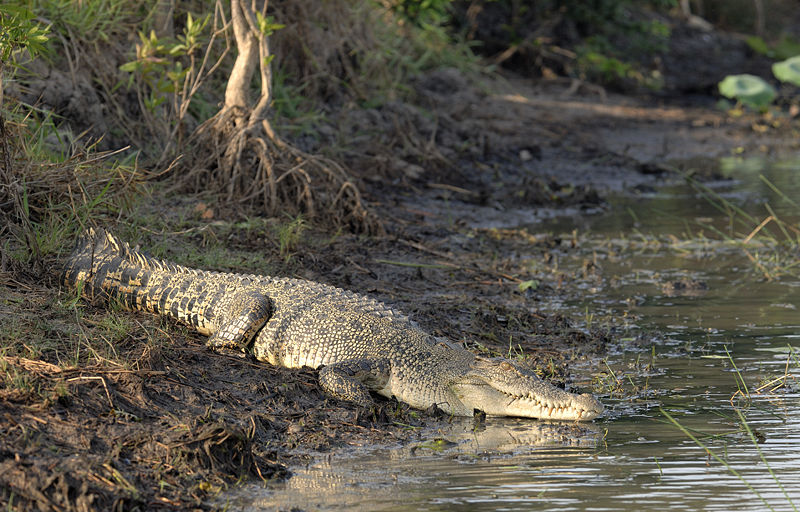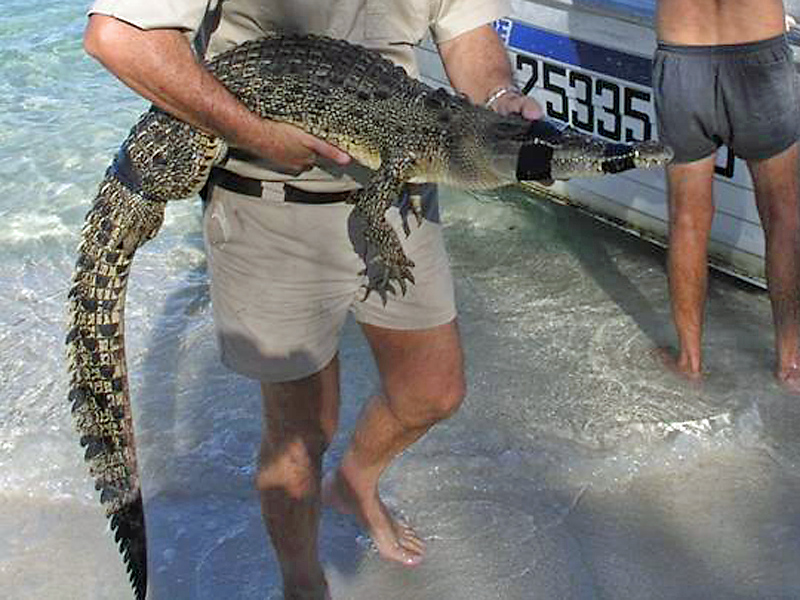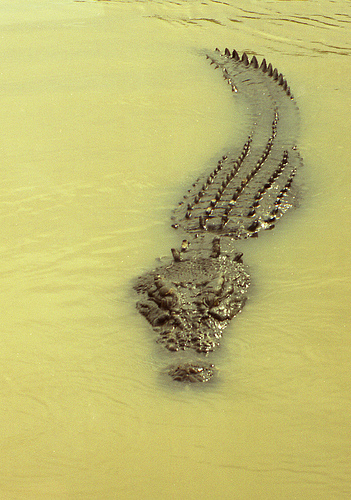Colours
Distinguishing features
The saltwater crocodile has a wide snout compared to most crocodiles. However it has a longer muzzle than the mugger crocodile; its length is twice its width at the base.
The saltwater crocodile has fewer armour plates on its neck than other crocodilians. On this species, a pair of ridges runs from the eyes along the centre of the snout. The scales are oval in shape and the scutes are small compared to other species.
The adult saltwater crocodile's broad body contrasts with that of most other lean crocodiles.
The head is very large. Skull lengths more than 75 cm have been confirmed for the species. The teeth are also long, with the largest teeth (the fourth tooth from the front on the lower jaw) having been measured to 9 cm in length.
Young saltwater crocodiles are pale yellow in colour with black stripes and spots on their bodies and tails. This colouration lasts for several years until the crocodiles mature into adults. The colour as an adult is much darker greenish-drab, with a few lighter tan or grey areas sometimes apparent. Several colour variations are known, and some adults may retain fairly pale skin, whereas others may be so dark as to appear blackish. The ventral surface is white or yellow in colour on crocodiles of all ages. Stripes are present on the lower sides of their bodies, but do not extend onto their bellies. Their tails are grey with dark bands. (Wikipedia)
Size
- Up to 700 cm (Length of specimen)
Weight
- Up to 2000 kg
Synonyms
Interesting facts
- They have the strongest bite of any animal today. (Wikipedia)
Distribution
Distribution and habitat preferences
As its name implies, this crocodile can live in salt water, but usually resides in mangrove swamps, estuaries, deltas, lagoons, and lower stretches of rivers. They have the broadest distribution of any modern crocodile, ranging from the eastern coast of India, throughout most of Southeast Asia, stretching south to northern Australia, and historically ranging as far west as off the eastern coast of Africa and as far east as waters off the coast of Japan.
Saltwater crocodiles generally spend the tropical wet season in freshwater swamps and rivers, moving downstream to estuaries in the dry season, and sometimes travelling far out to sea. Crocodiles compete fiercely with each other for territory, with dominant males in particular occupying the most eligible stretches of freshwater creeks and streams. Junior crocodiles are thus forced into the more marginal river systems and sometimes into the ocean. (Wikipedia)
Web resources
Danger
- often fatal - Crocodiles have been known to attack humans when they intrude into crocodile territory.


